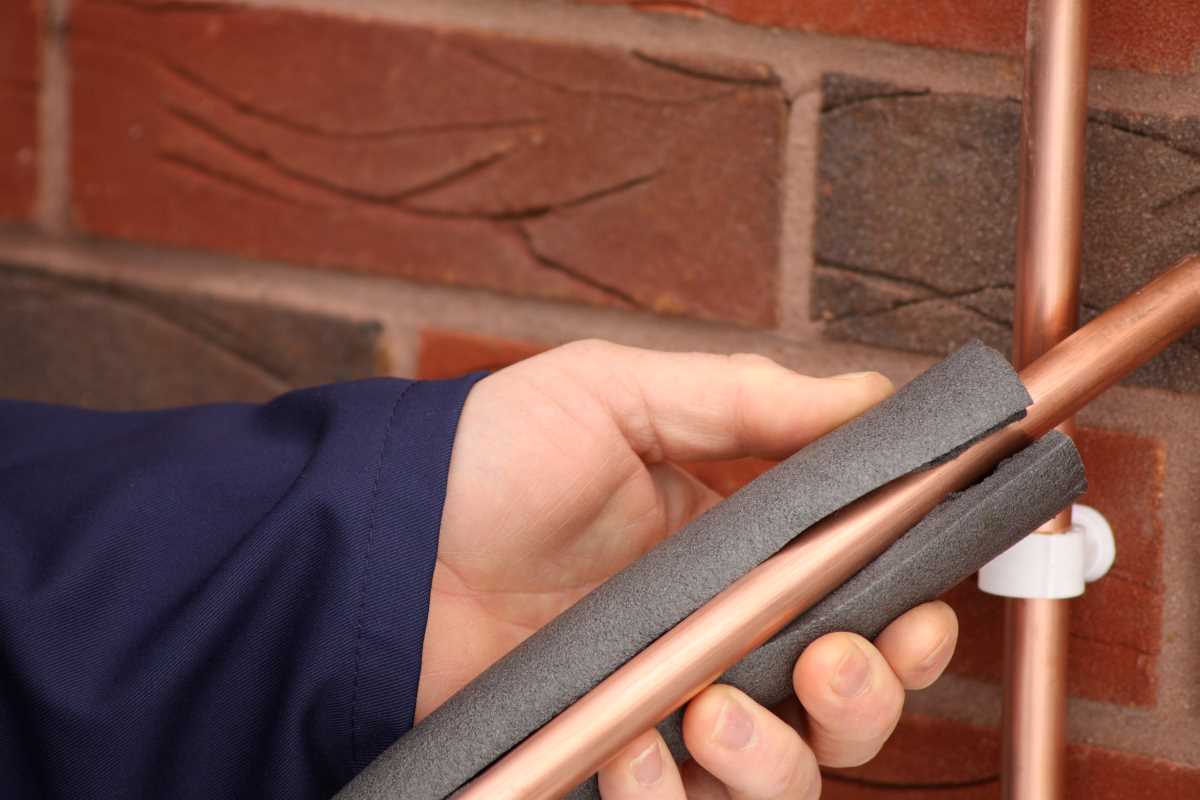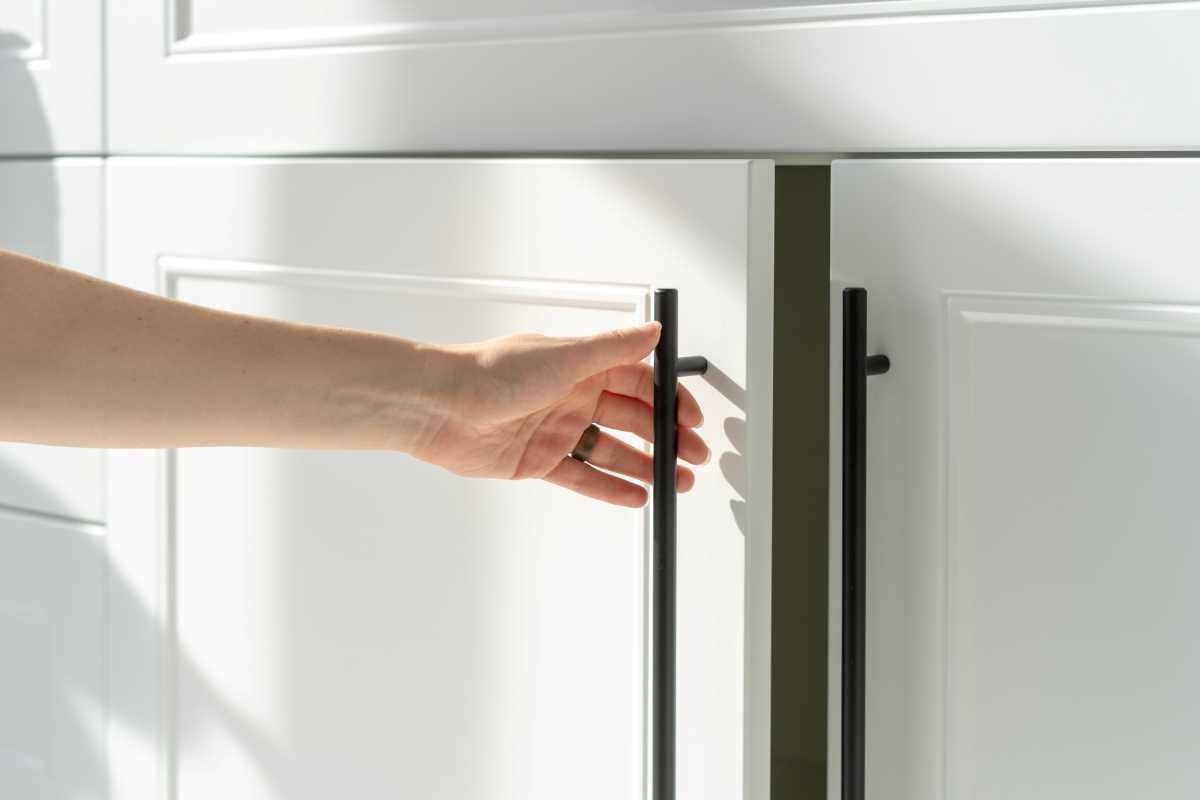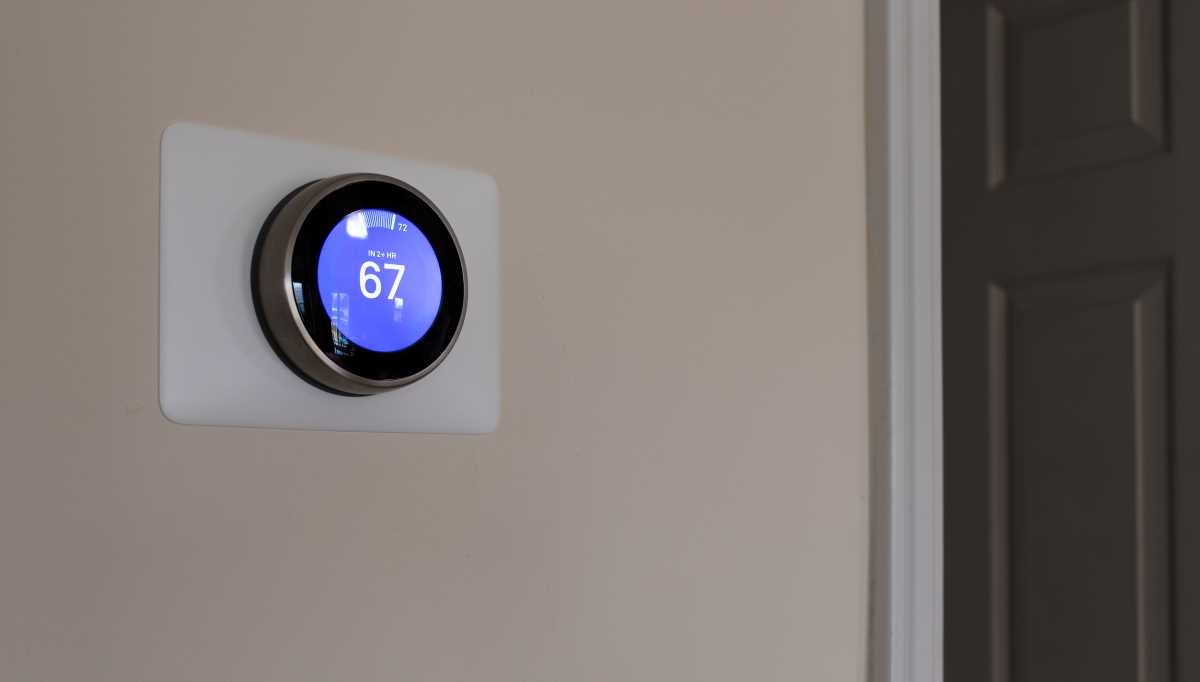Freezing pipes are one of the most common home insurance claims in the winter. In fact, along with internal water damage, they are the third most common claim and cost about $10,849 to repair on average.
As the water in the pipes freezes, it expands and creates pressure, which can rupture the pipe. As the ice in the pipes melts, it can cause water damage throughout the home.
While homeowners insurance can cover repairing a burst pipe and subsequent water damage, it’s helpful to know how to prevent it in the first place if you’re able. So let’s take a look at how to keep pipes from freezing.
1. Insulate the pipes

If you can't find pipe sleeves, consider using newspaper.
Start with exposed pipes under cabinets, in basements, and in the garage. Many hardware stores sell easy-to-install insulation like pipe sleeves. This helps keep the temperature of the pipe more regulated, though it won’t prevent every disaster. If you’re in a pinch and need to insulate a pipe quickly, roll a quarter inch of newspaper around the pipe.
You can also insulate the rooms where pipes are – areas like attics and basements. This will help keep the overall temperature in the room warmer and reduce the likelihood of your pipes freezing.
2. Seal cracks and holes near pipes
Cracks and holes let cold drafts in. During freezing temperatures, the last thing you want is cold air on your pipes. Solve this problem by sealing up any cracks, holes, and gaps under cabinets near your pipes.
When possible, seal both the interior and exterior so that the draft is completely blocked. You can use spray foam insulation to get the job done quickly and efficiently. For smaller cracks where spray foam insulation won’t work, use caulk. This will seal the areas and can be smoothed out for neatness.
3. Apply heating tape
If insulation is like a down blanket for your pipes, heating tape is an electric blanket. Heating tape is perfect for accessible pipes that need extra insulation from the cold weather. There are two types of heating tape: one that turns on and off by itself and one that has a manual switch.
This adds necessary heat to the pipes to prevent freezing. Be careful using it, though. For your safety, follow the product’s instructions to prevent accidental fires.
4. Run the faucet
Running water doesn’t freeze. Fortunately, you don’t have to turn the water on full blast to get the benefits of running water. Turning faucets on so that there is a consistent drip is usually enough to prevent the pipe from freezing and bursting.
Make sure to run both the faucet’s hot and cold water so that you don’t have one side freeze. If you have single-handle faucets like most kitchens, set the water to run warm so that an equal amount of hot and cold water goes through.
5. Keep cabinet doors open

Leaving cupboard doors ajar can keep pipes warm.
Areas under cabinets tend to get and stay cold because there’s no extra warm air circulating under the sink. Open cabinet doors so that the warmth of the room can help warm under the sink. Do this in your kitchen and bathrooms to make sure these areas get the benefit of the household’s warm air.
6. Keep the heat on

Keeping the heat on when you're away from home can help prevent freezing pipes.
Keep the heat on in the house to keep pipes warm. You don’t need a full 75 degrees in the house during the winter, but if you plan on leaving for an extended period of time, keep the heat above 50 degrees Fahrenheit to help prevent freezing pipes.
Thawing a frozen pipe
Sometimes you can’t stop a pipe from freezing. If you come home to barely a trickle of water coming from your faucets, you may need to apply heat to the pipes sending water to the faucet. You can do this with a hair dryer, a portable space heater, or by wrapping towels soaked in hot water around the pipes.
When heating pipes with things like a dryer or space heater, make sure to keep flammable materials away from the heat source to prevent a fire. Never, ever use a blowtorch, propane or kerosene heater, or any open flame to thaw your pipes.
As the pipe is thawing, keep the faucet on to allow the water to flow through.
If warming a pipe doesn’t resolve your water pressure problems, you likely have a frozen pipe somewhere you can’t easily access. If that’s the case, call a plumber for help.
Frozen pipes and home insurance
Whether you have homeowners, condo, or landlord insurance, these policies typically do cover frozen pipe damage (but ask your insurance representative to make sure!). That’s good news – frozen and burst pipes can cause thousands of dollars worth of damage to your home and your belongings. That’s especially true if the pipe bursts when you’re away from home and can’t catch the problem when it first happens.
To make a claim, first turn the water off to stop the damage from escalating. Then call your insurance provider to report the event. Get personal belongings on shelves or surfaces where water can’t damage them. Take pictures of the problem and make sure the claims specialist has a list of all damaged items.
While you’ll still need a plumber to fix the actual busted pipe right away, your policy can cover your damaged cabinets, flooring, walls, and personal belongings up to the coverage limits.
